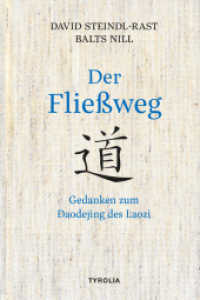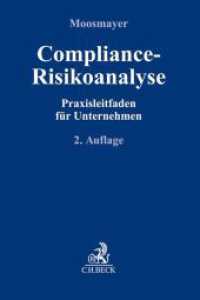Full Description
This book is the first of the two-volume collection of papers on formulaic language. The collection is among the first ones in the field. The book draws attention to the ritualized, repetitive side of language, which to some estimates make up over 50% of spoken and written text. While in the linguistic literature, the creative and innovative aspects of language have been amply highlighted, conventionalized, pre-fabricated, "off-the-shelf" expressions have been paid less attention - an imbalance that this book attempts to remedy. The first of the two volumes addresses the very concept of formulaic language and provides studies that explore the grammatical and semantic properties of formulae, their stylistic distribution within languages, and their evolution in the course of language history. Since most of the papers are readily accessible to readers with only basic familiarity with linguistics, besides being a resource in linguistic research, the book may be used in courses on discourse structure, pragmatics, semantics, language acquisition, and syntax, as well as being a resource in linguistic research.
Contents
1. Preface; 2. Introduction. Approaches to the study of formulae (by Corrigan, Roberta); 3. Part I. What is Formulaic Language; 4. Grammarians' languages versus humanists' languages and the place of speech act formulas in models of linguistic competence (by Pawley, Andrew); 5. Identifying formulaic language: Persistent challenges and new opportunities (by Wray, Alison); 6. Part II. Structure and distribution; 7. Formulaic tendencies of demonstrative clefts in spoken English (by Calude, Andreea S.); 8. Formulaic language and the relater category - the case of about (by Hudson, Jean); 9. The aim is to analyze NP: The function of prefabricated chunks in academic texts (by Kerz, Elma); 10. Fixedness in Japanese adjectives in conversation: Toward a new understanding of a lexical ('part-of-speech') category (by Ono, Tsuyoshi); 11. Genre-controlled constructions in written language quotatives: A case study of English quotatives from two major genres (by Sams, Jessie); 12. Some remarks on the evaluative connotations of toponymic idioms in a contrastive perspective (by Szerszunowicz, Joanna); 13. Part III. Historical change; 14. The role of prefabs in grammaticization: How the particular and the general interact in language change (by Bybee, Joan L.); 15. Formulaic models and formulaicity in Classical and Modern Standard Arabic (by Lancioni, Giuliano); 16. A corpus study of lexicalized formulaic sequences with preposition + hand (by Lindquist, Hans); 17. The embodiment/culture continuum: A historical study of conceptual metaphor (by Mischler, III, James J.); 18. From 'remaining' to 'becoming' in Spanish: The role of prefabs in the development of the construction quedar(se) + ADJECTIVE (by Wilson, Damian Vergara); 19. Author index; 20. Subject index







